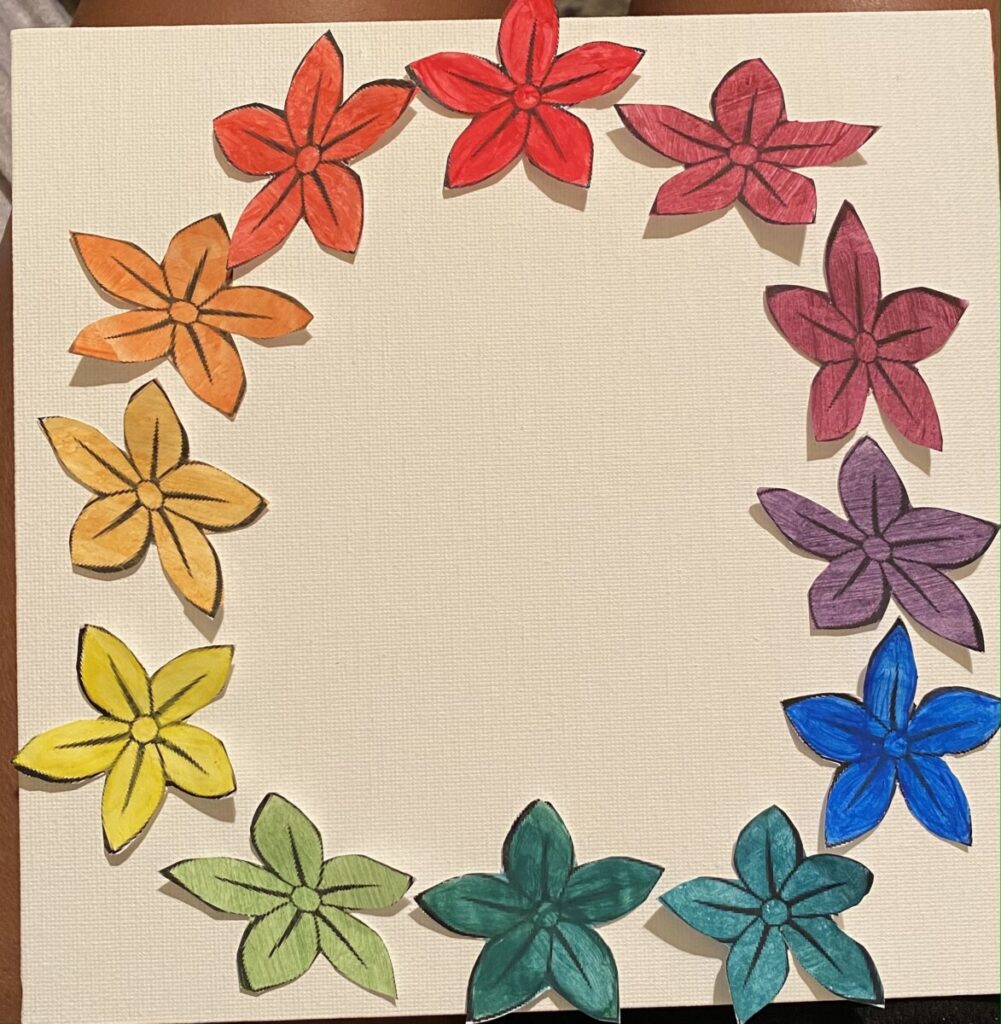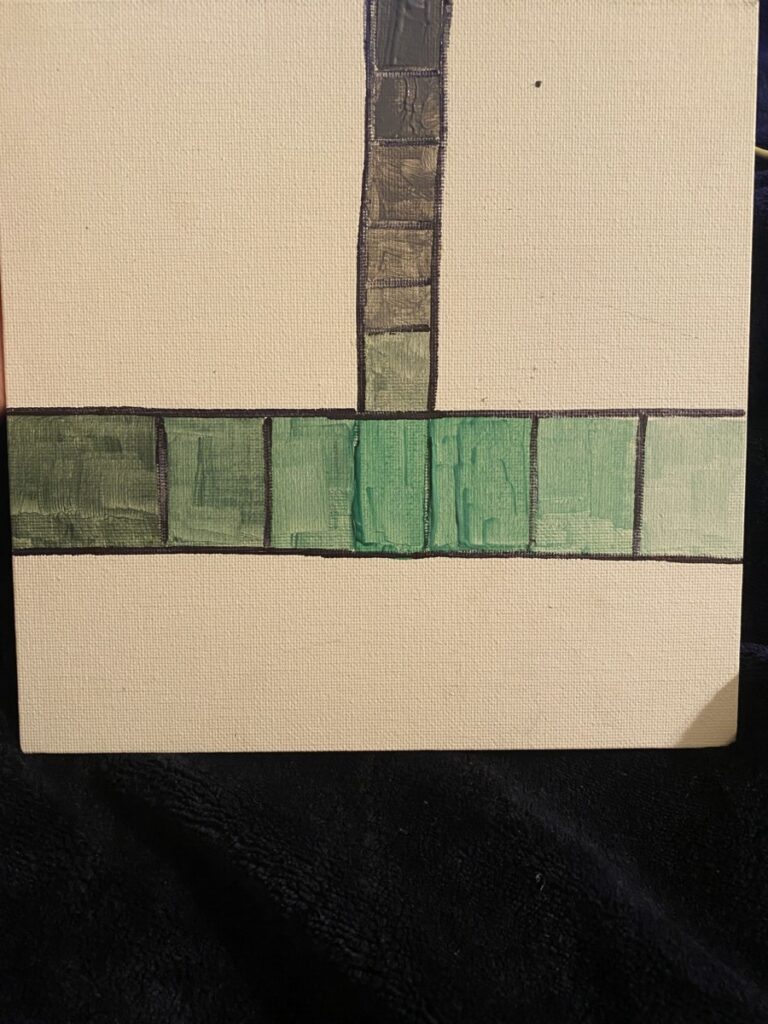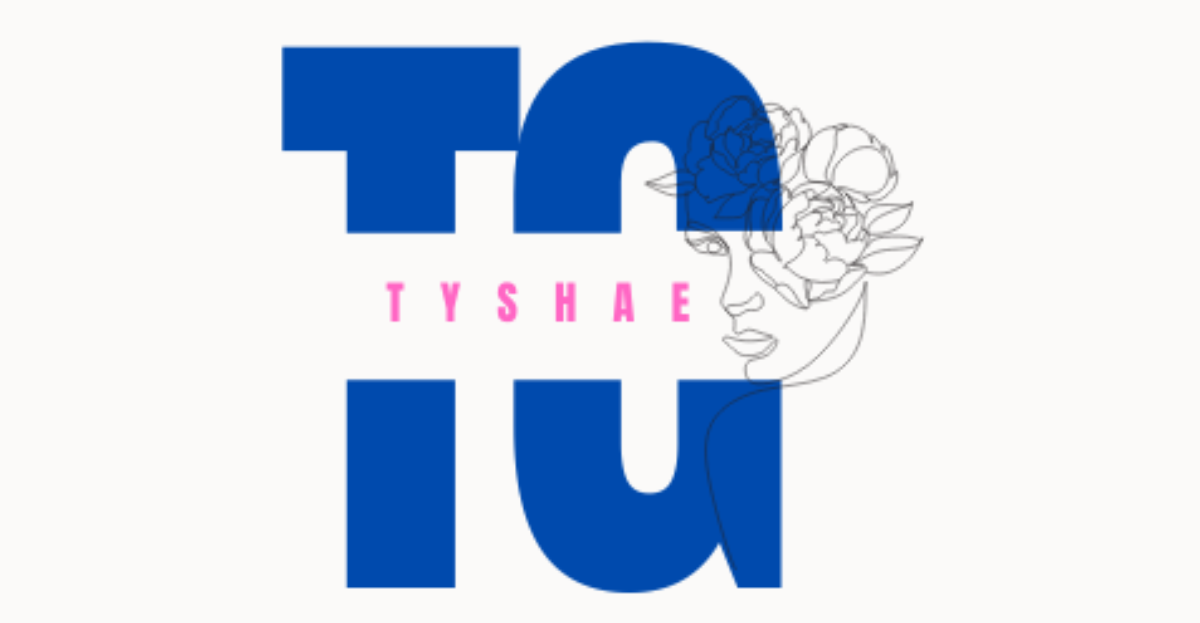Course Description:
Examines the ways in which visual presentation is used in a variety of settings. Students learn color theory and principles of visual design and apply this knowledge in venues that include department and specialty stores, malls, and restaurants.
The objective of this assignment was to compare design components including shape, color, space, value, form, line and texture of a piece of art work to a mannequin window display.

This color wheel assignment visually demonstrates the relationship between the primary colors of red, yellow, blue, the secondary colors of orange, green, violet and when a primary and secondary color are mixed together forms six tertiary colors of red-orange, yellow-green, yellow-orange, red-violet, blue-green, and blue violet.
This assignment helped one understand the importance of color as it influences one’s thoughts and reactions.

This is a color value chart used to display how light or dark a given hue can be. When the hue was added with white paint it produced a tint. When the hue was mixed with black it created a shade. Tones of the hue was also created by mixing equal parts of black and white to produce a grey.




